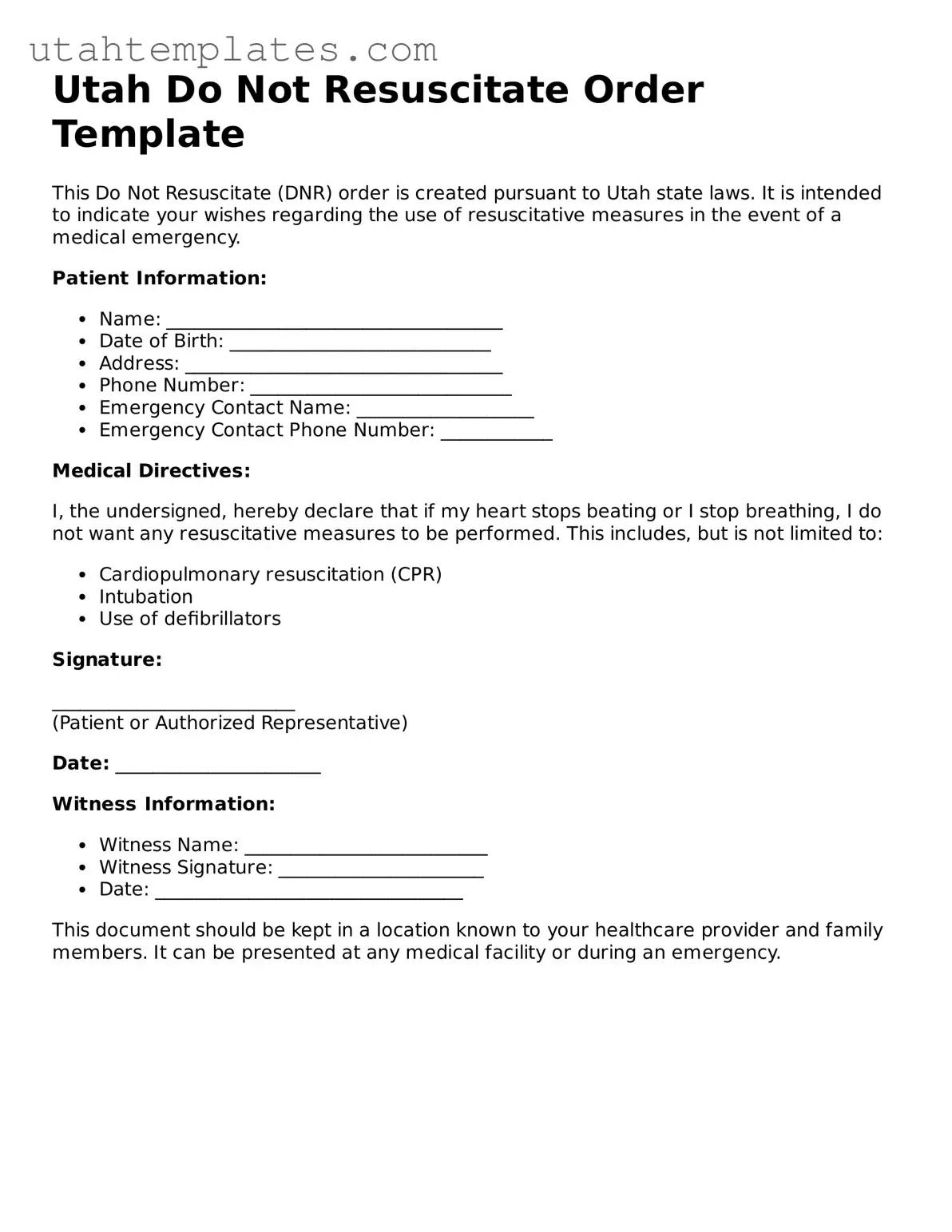Completing the Utah Do Not Resuscitate (DNR) Order form requires careful attention to detail. Many individuals make mistakes that can lead to confusion or invalidation of their wishes. One common error is failing to include the patient's signature. Without this essential component, the form may not be legally recognized.
Another frequent mistake involves not dating the document. A DNR order must be current to be effective. If the form lacks a date, healthcare providers may question its validity, potentially leading to unwanted resuscitation.
People often overlook the importance of having the form signed by a physician. In Utah, a physician's signature is necessary to ensure that the DNR order is legitimate. If this signature is missing, medical personnel may be unable to honor the request.
Additionally, some individuals neglect to provide clear and specific instructions. Ambiguities in the wording can lead to misunderstandings about the patient's wishes. It is crucial to use precise language to convey the desired medical interventions clearly.
Another mistake is failing to provide copies of the DNR order to relevant parties. After completing the form, it is vital to distribute copies to healthcare providers, family members, and anyone involved in the patient's care. Without these copies, the DNR order may not be followed in emergency situations.
People sometimes forget to review the DNR order periodically. As circumstances change, so might a person's wishes regarding resuscitation. Regularly checking and updating the form ensures that it reflects the current intentions of the patient.
Some individuals also make the mistake of not discussing their DNR order with family members. Open communication can prevent confusion and conflict during critical moments. Engaging loved ones in the conversation helps everyone understand the patient's wishes.
Lastly, many fail to consider the implications of a DNR order in different healthcare settings. A DNR order may be treated differently in hospitals versus at home. Understanding these nuances can help ensure that the patient’s wishes are honored in all situations.
